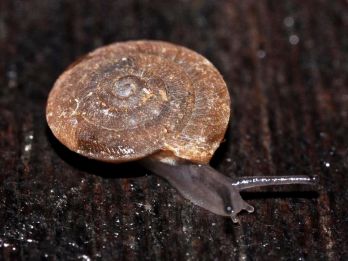Lens snail
Lens snail (Caracollina lenticula) is an air-breathing land snail, part of the Trissexodontidae family.
Background
This snail is suited to dry habitats and is widely distributed across the Mediterranean region.
Lens snails are found around human habitation as they can spread via movement of goods and machinery. They also occur in natural habitats, such as:
- under stones and wood
- on walls
- between plants
- in soil substrate
- behind dunes
- on rocky coasts.
Impacts
Lens snails exhibit aggregation, climbing and aestivation (dormancy associated with hot or dry periods). These attributes indicate South Australia’s climate and calcareous soils of our grain cropping regions, would be a suitable habitat.
If lens snails were to establish here, they have potential to become a grain contaminant and be a major market access threat.
Identification
The shell is characteristically flat and lentiform with no teeth. The umbilicus is wide, especially in juveniles.
Lens snails are lightly coloured with a reddish-brown hue, long and thick tentacles, with black eyes.
When crawling, the shell is lifted above the right side of the animal.
Lens snails are between 3 to 4 mm and 7 to 9 mm.


